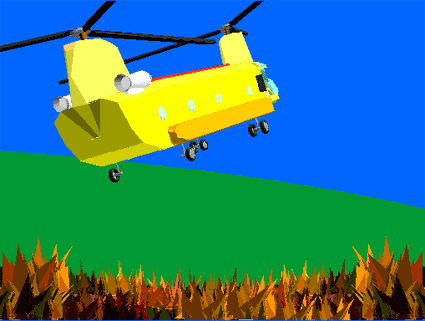
Unit 7
Oozing and Growing: Percolation

| Download the printable version of this unit in .pdf format (You must have Adobe Acrobat Reader) | |
Sections:
Imagine a forest in which the trees were planted by scattering seeds randomly all over the ground. The trees are now full-grown, tall and green. Some trees stand alone; others are in clusters. The forest is peaceful on a quiet, windless day.
Now imagine that all the trees along one edge of the forest are suddenly set on fire. As each tree burns, the fire spreads rapidly to the trees next to it. Every tree in the same cluster burns, as the fire spreads from each tree to its closest neighbors. But fire does not spread from one cluster to another, because it cannot jump across the space that separates clusters; there is no wind.
If the trees are planted sparsely, with just a few trees scattered over a large area, chances are the fire will burn only a small number of trees and then die out; most of the forest will be safe. That's because sparsely planted trees, scattered randomly, tend to stand alone or in small clusters separated from one another.
In contrast, suppose that the trees are planted very densely, with lots of trees crowded into a small area. Then the fire is likely to spread through nearly the entire forest. That's because densely planted trees, scattered randomly, tend to form large clusters. There may even be one large cluster that reaches from one side of the forest to the other. The trees in such a large cluster form a connected path that allows the fire to spread from tree to tree across the entire forest.
A cluster that reaches from one side of the forest to the other is said to percolate, and the model we have just described for a burning forest is called percolation. We say a cluster percolates when it forms a connected path from one side of the forest to the other. The cluster that spans the forest is called the "percolating cluster.'' (A "percolator'' is a device for making coffee. In a coffee percolator, water percolates-finds a connected path -through the narrow spaces in a thick layer of ground coffee.)
Previous: 6.3 - Research Projects